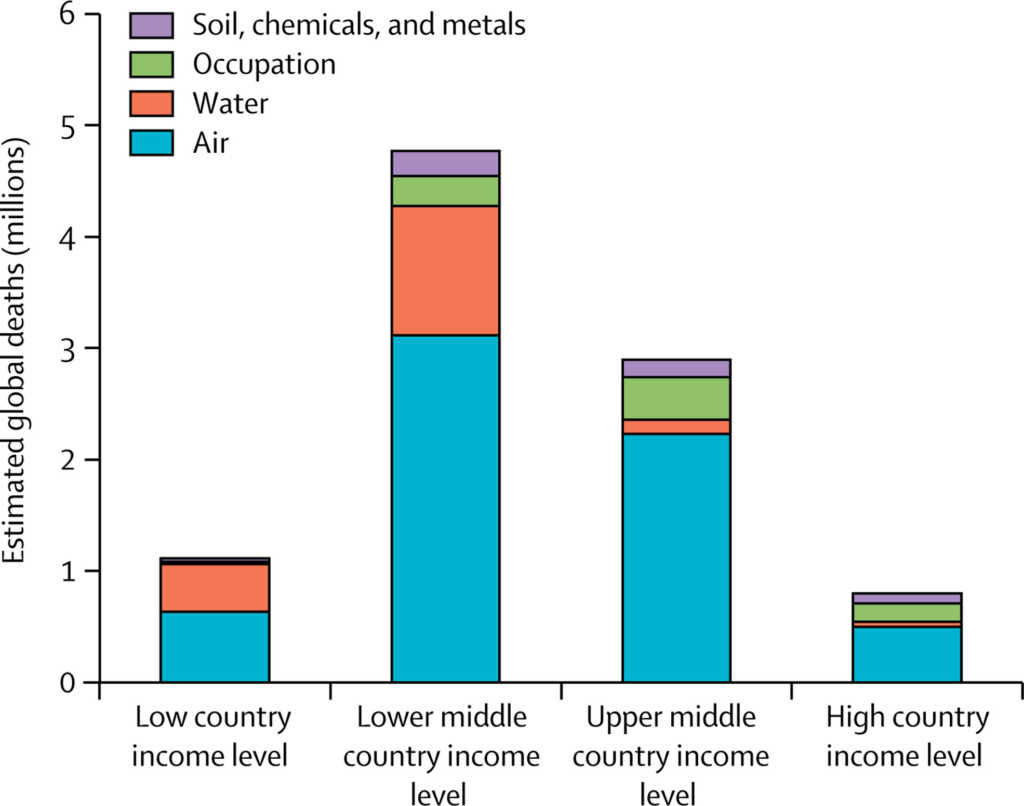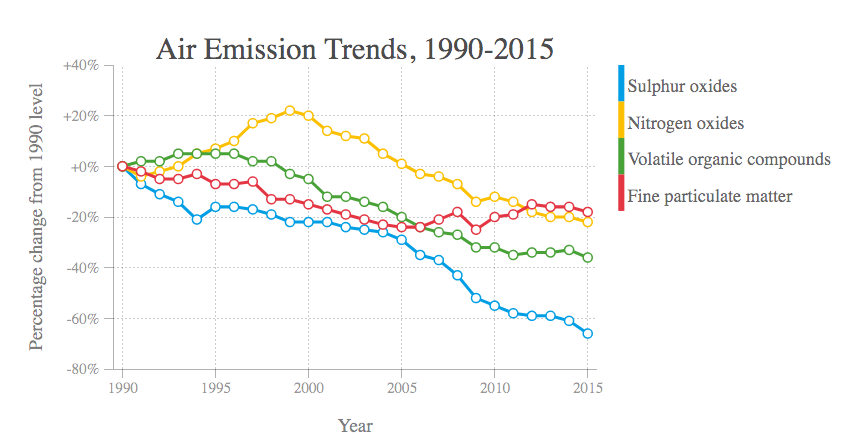
Air pollution is costing us dearly
Pollution is costly. Two recent studies clearly show that air pollution damages our health, increases healthcare costs, and is a drag on economic growth. Given these high costs—costs that we all pay one way or another—reducing air pollution makes a lot of economic and environmental sense. This blog looks at how air pollution affects us and the policies that can help reduce it.
The impact of air pollution, globally
A major study recently revealed how much pollution costs the world today. In short: it’s a lot. The Lancet Commission on Pollution and Health found that one of every six premature deaths is attributable to toxic exposure. Environmental pollution now kills more people than each of the following causes: smoking, infectious diseases, alcohol, road accidents, or war and violence. The Lancet estimates the global costs of premature deaths from pollution to be more than $4.6 trillion (U.S.) or 6.2% of world GDP.
Most of these deaths are from air pollution. Of the estimated nine million deaths caused by pollution, 72% or 6.5 million are due to contaminated air, including indoor and outdoor air. Globally, the deaths caused by air pollution—from fine particulates and ozone in particular—are increasing, and most are related to heart or lung diseases.
Deaths caused by pollution are most prevalent in middle-income countries. However, just under 1 million deaths occur in high-income countries, like Canada. And here too, air pollution is the primary culprit.

The State of Canada’s Air
On November 3, the Canadian Council of Ministers of the Environment put out their State of the Air Report. The report covers air quality indicators from across the country along with government efforts to improve it. Overall, it shows that air pollutant emissions have declined since 1990, even as the economy has grown. Health Canada estimates that these improvements have prevented 4,100 deaths and 770,000 asthma events.

Progress, however, has not been uniform across pollutant types. Emissions of fine particulate matter, for example, have increased since 2005 (see graph). Similarly, progress in reducing volatile organic compounds has plateaued since 2010. These pollutants contribute to smog and can lead to health issues like asthma attacks, chronic bronchitis, and heart attacks.
All told, the cost of Canada’s air pollution was $36 billion in 2015, causing 7,700 premature deaths, according to a report by the International Institute for Sustainable Development. So while we are improving our air quality and we suffer far fewer consequences from air pollution than residents of lower-income countries, air pollution still costs us.
Solving Canada’s remaining air pollution challenges
Clearly, Canada is making progress. But how can we do more?
Government policies are a key part of the story. For example, last month the federal government released new standards for sulphur dioxide, replacing the previous ones set in 1989. Alberta’s coal phase-out is another example; another is making vehicle emissions standards more stringent.
Improvements in technology also help reduce air pollution. For example, the recent pledge of twelve major international cities, including Vancouver, to only procure zero-emission buses is possible largely due to advances in battery-electric buses (which in China, already make up 20% of the fleet!). These advances come after years of research and development, helped by government funding.
And ecofiscal policies? Can they be part of the toolkit? Carbon pricing already plays an indirect role, as it encourages people to use low-carbon energy sources, which tend to emit less air pollution. Similarly, congestion pricing could help reduce transportation emissions by reducing traffic jams; however, this tool has yet to be implemented in Canadian cities.
More directly, pricing specific air pollutants, such as sulphur dioxide, could be an option. After all, Canada does have experience with the cap and trade system set up with the United States for acid rain. The Ecofiscal Commission may delve into the challenge of pricing air pollution in the future.




Comments are closed.